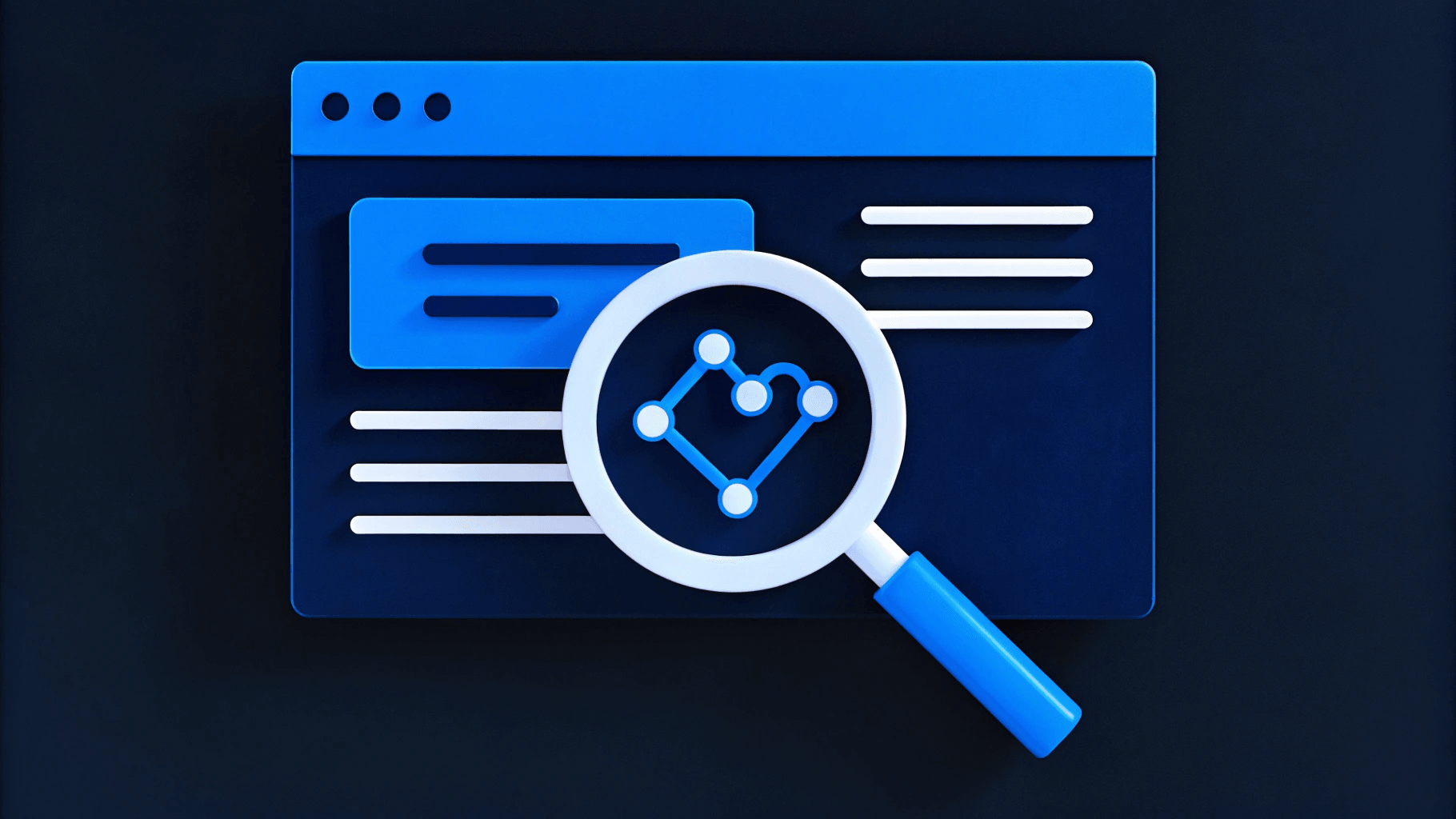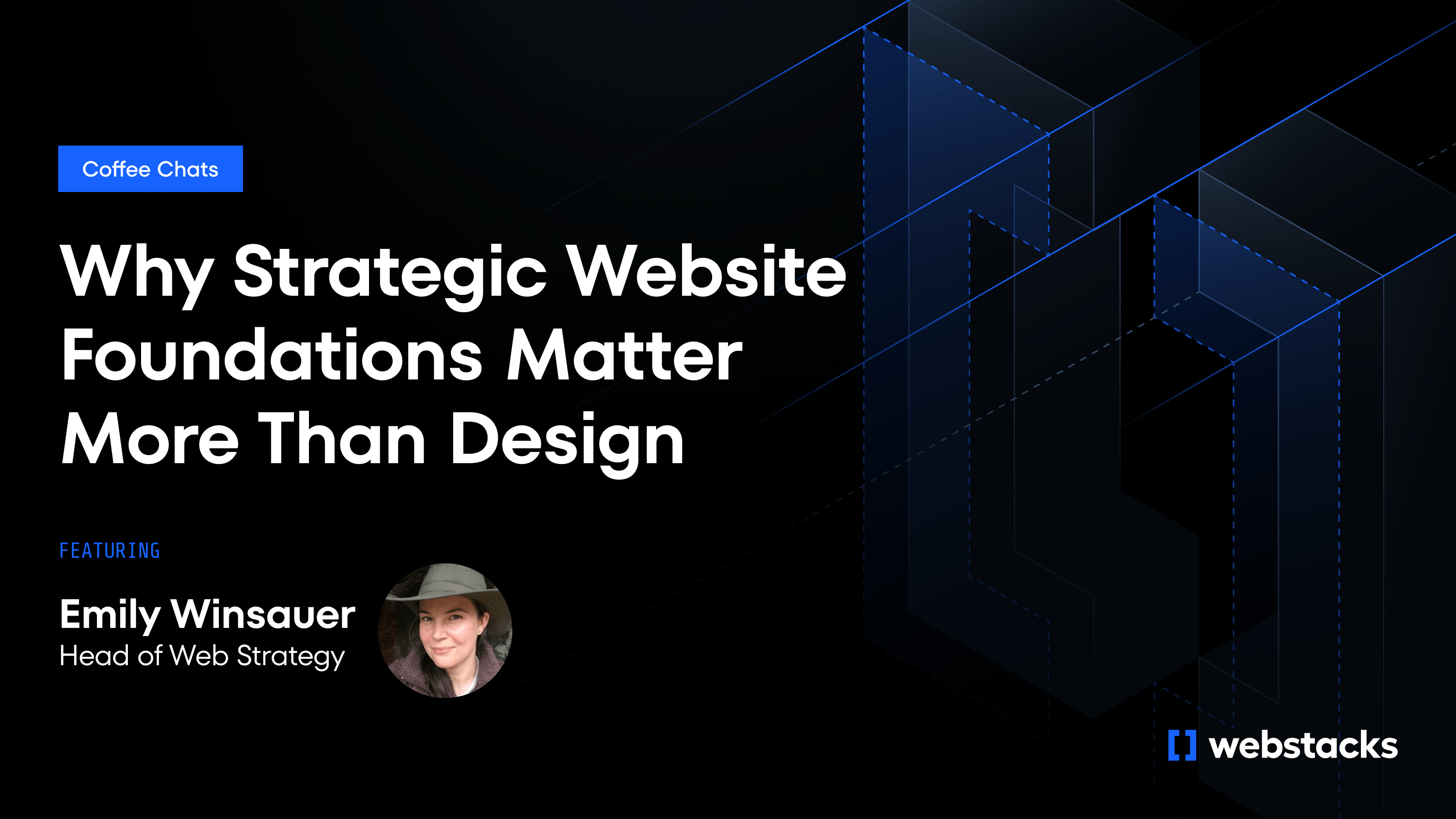Web teams are under pressure to deliver more—more pages, more updates, more velocity—with the same limited resources. But most workflows weren’t built for that pace. Simple updates get stuck in long review cycles. Campaigns stall while teams wait on dev availability. The website turns into a source of friction instead of a growth tool.
AI helps clear that path. Code assistants reduce manual work. QA tools catch issues before they go live. Predictive ops systems identify performance problems early, without waiting on a post-launch audit.
Webstacks integrates AI into the way teams build and ship. Composable architecture makes the stack more flexible. Modular design systems tighten consistency. Embedded product teams bring it all together. You get a faster site, fewer bottlenecks, and a system that supports constant iteration. The sections below break down how this works and why it delivers faster results than traditional web development models.

How Webstacks Scales Web Development Teams
Most web teams face growing pressure to deliver more with limited resources. Campaigns, content updates, and product launches compete for the same development bandwidth. Without the right systems in place, even small changes can introduce delays or break established processes.
Webstacks helps teams avoid that slowdown by introducing structure. We combine composable architecture, modular design, AI-supported workflows, and embedded product teams. These strategies give teams the capacity to move faster and maintain quality as the site grows.
Composable Stack: Remove Bottlenecks at the Foundation
In many organizations, updates to the website require involvement from engineering. Even small changes get pulled into sprint cycles. The result is a long queue of minor requests that distract developers from strategic work.
A composable stack separates the parts of the site that change frequently from the core codebase. This allows each team to work on their own timeline. When marketers can ship content without developer help, the pace of publishing improves and engineering stays focused on high-leverage tasks.
- At HeyGen, a two-person marketing team needed to launch pages quickly during a high-growth period. Webstacks implemented a composable stack with structured schema, which allowed the team to publish over 40 SEO pages in one quarter and grow organic traffic by more than 25,000 users.
- Solana had a different challenge. Dozens of microsites operated in isolation, each with its own deployment process. Webstacks helped consolidate these properties into a unified composable system. This brought consistency and made future updates easier to coordinate.
This approach works because it reduces the number of dependencies between teams. With clear ownership and isolated systems, changes can happen more frequently and with less risk.
Modular Design System: Maintain Quality Without Slowing Down
As websites grow, the cost of maintaining consistency increases. Teams often recreate the same layouts, revisit previously settled design decisions, and run into mismatches that require manual QA. Over time, these inefficiencies slow down content production and erode trust in the system.
A modular design system solves this by turning repeatable elements into shared components. Each module includes predefined rules for layout, interaction, and styling. Once added to the system, these elements can be reused across the site without introducing variation or technical debt.
- Fireworks AI was spending too much engineering time on basic page builds. Webstacks introduced schema-driven templates connected to a modular system. This allowed marketers to build and publish without waiting on development support.
- Knapsack needed to coordinate publishing across multiple teams. Their design system, built and maintained by Webstacks, provided a clear foundation and eliminated the need to redo layouts or revisit branding decisions on every page.
- At Deepgram, we added AI tools that reviewed layouts and flagged off-brand patterns. These checks helped catch mistakes early and reduced the need for manual review later in the process.
Modular systems create a reliable baseline. When design rules are enforced through reusable components, teams move faster without increasing the risk of inconsistency.
AI-Enhanced Workflows: Catch Problems Early and Reduce Rework
When QA happens late in the process, teams face pressure to ship before issues are fully resolved. Errors surface during final review or post-launch, which leads to rework, delays, or broken experiences. This reactive approach can’t scale with site complexity.
Integrating AI into the development workflow changes that dynamic. Tools scan for performance issues, flag design inconsistencies, and review code or content as it is created. Teams receive immediate feedback and can address problems while work is still in progress.
- At Deepgram, the team needed to support multiple personas and page types. Predictive WebOps flagged layout issues and performance regressions in staging. These alerts reduced rework by 70 percent and helped maintain fast load times.
- Privy used AI-powered checks inside the CMS to maintain consistency. The system flagged color mismatches, spacing problems, and tone deviations before content went live. This kept the review cycle short and allowed pages to launch with confidence.
Early feedback reduces the cost of mistakes. When problems are addressed during creation, teams avoid downstream delays and protect the integrity of the release schedule.
Embedded Product Teams: Align Execution with Priorities
Traditional agency models rely on external teams that operate in parallel but not in sync. Communication often breaks down between marketing, design, and development. Even with the right tools, the structure introduces delays and makes it difficult to respond to change.
Webstacks addresses this by embedding full product teams into the client’s workflow. Each team includes a strategist, designer, developer, and analyst who work inside the same tools, follow the same planning cycles, and join the same conversations. This structure creates shared ownership and reduces the time lost in handoffs.
- At HeyGen, the Webstacks team worked directly inside the client’s Slack and sprint planning. As priorities shifted, execution stayed aligned with marketing goals. The result was faster turnaround times and higher throughput without the need to expand the internal team.
Embedded teams stay close to the work. Because planning and execution happen in the same system, requests don’t sit idle and priorities stay connected to output.

Metrics That Matter When Scaling with AI
Speed alone doesn’t guarantee progress. Teams can ship quickly and still introduce instability, design drift, or missed opportunities. Without clear measurement, it’s easy to confuse motion with impact.
AI reshapes how work gets done—from who touches what, to when decisions get made. That shift brings new patterns of collaboration and new failure points. You need metrics that reflect the full system, not just surface activity.
To understand whether these changes are working, track how the team works—how fast, how well, and how often things go right the first time.
- Adoption and engagement
- Percentage of team using AI tools weekly (60–70% is a healthy range)
- Developer sentiment and workflow satisfaction (captured in quarterly surveys)
- Velocity and output
- Median cycle time from request to release
- Output per engineer per sprint
- Quality and stability
- Defect rate by severity
- Mean time to recovery
- Percentage of launches requiring post-release fixes
High-performing teams track these metrics consistently and adjust their tooling and workflows based on what they learn.
Make AI Part of the System, Not an Overlay
Speed doesn’t come from AI alone. It comes from rebuilding the system so every team can move with clarity and control. Webstacks helps you make that shift—embedding AI where it drives measurable impact, pairing it with composable architecture, and integrating directly with your team’s workflows.
Talk to Webstacks to start building the system that scales with you.




